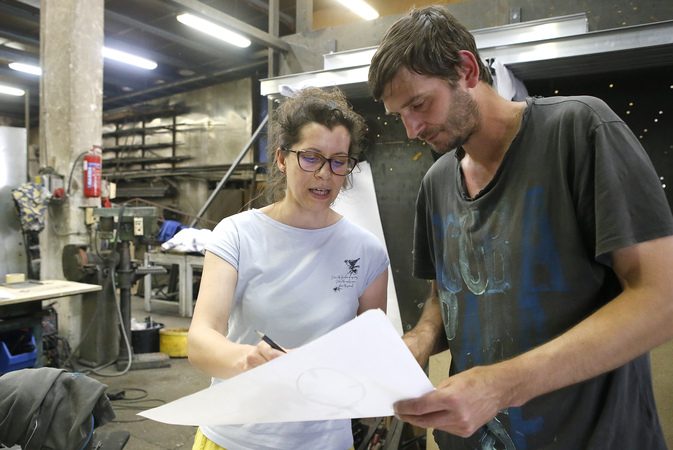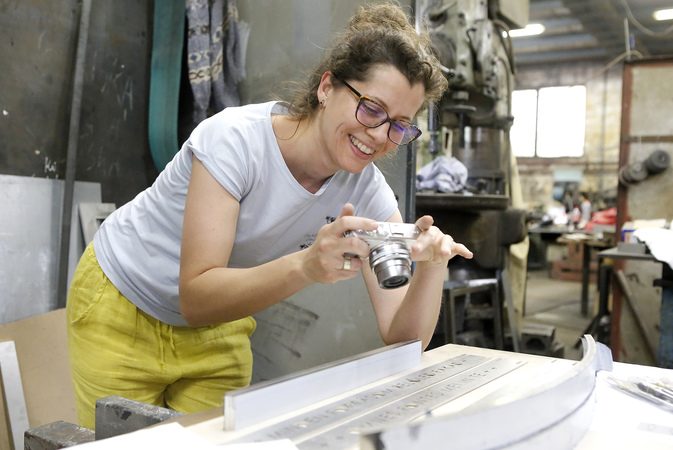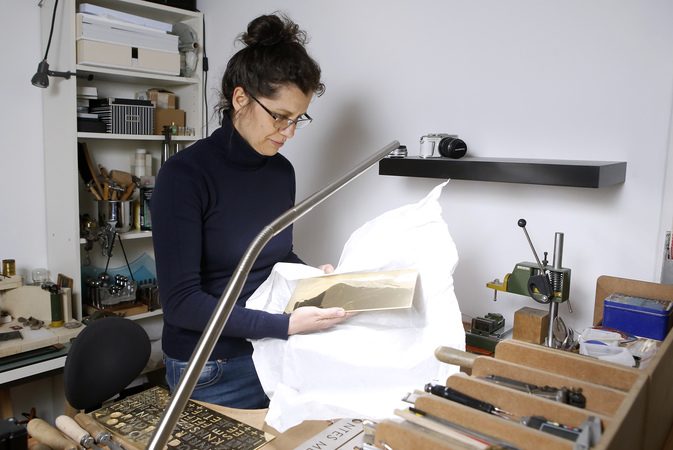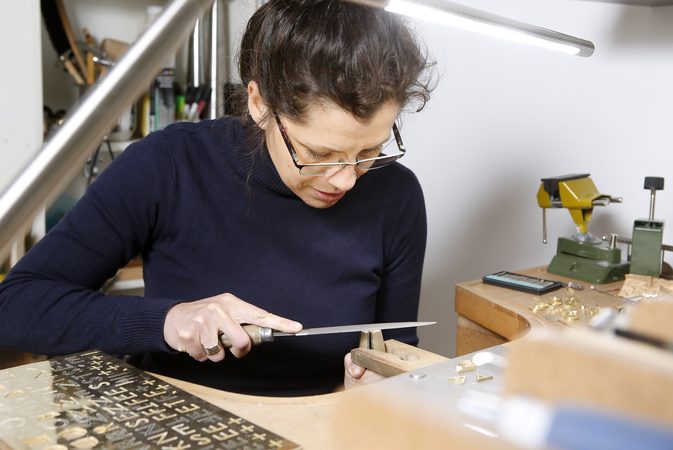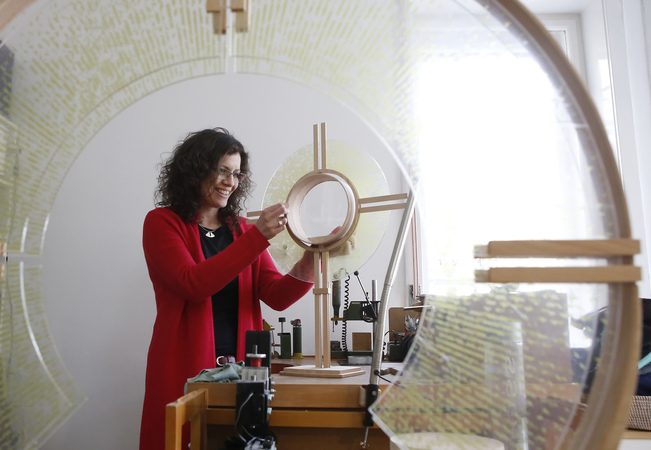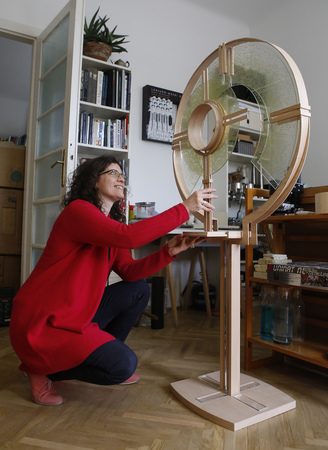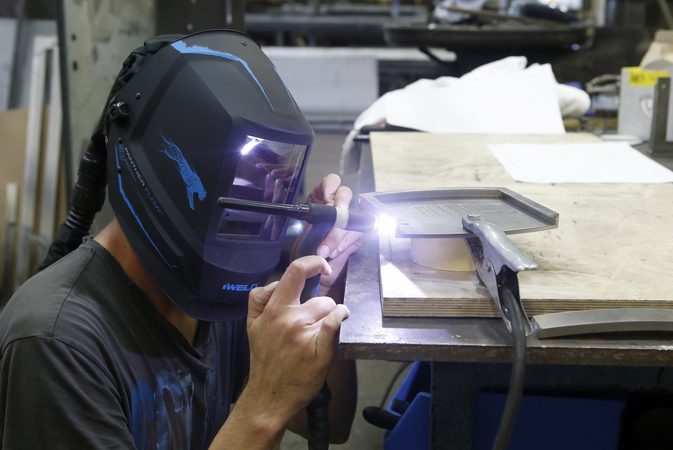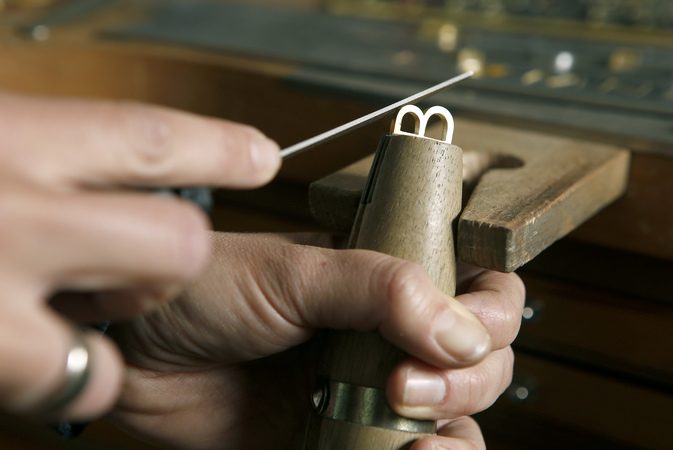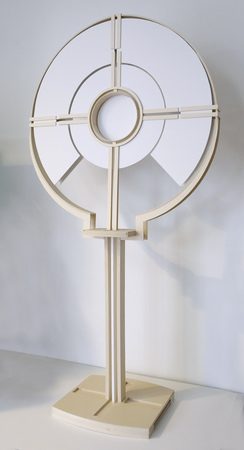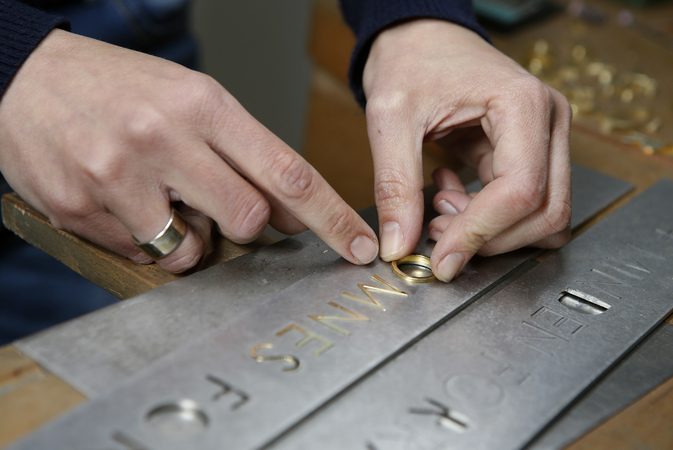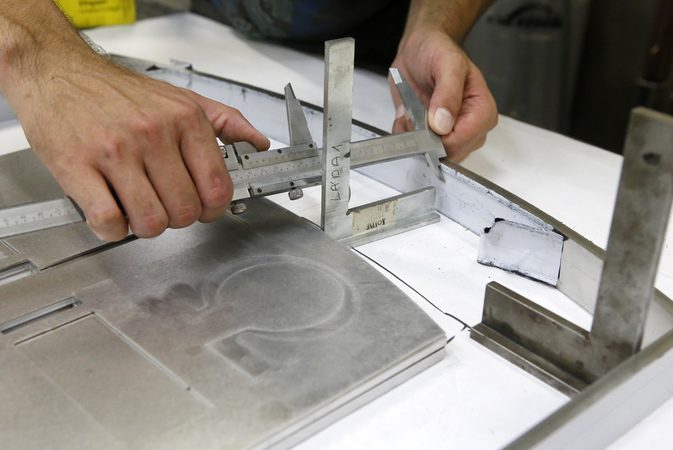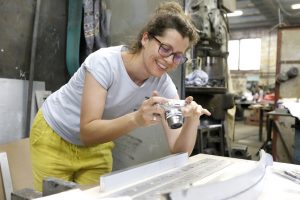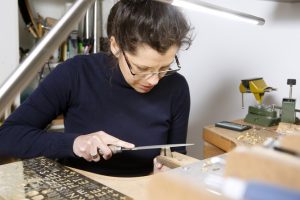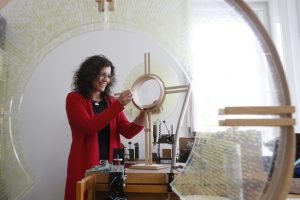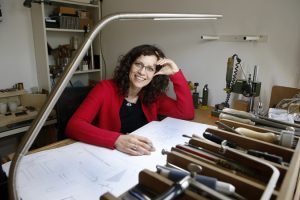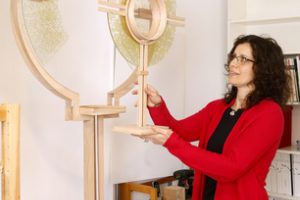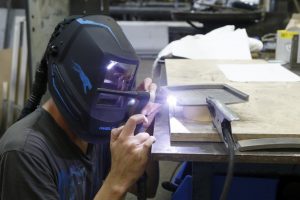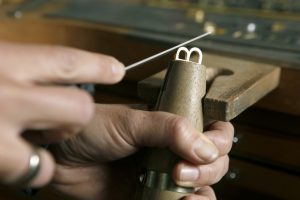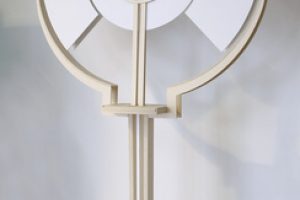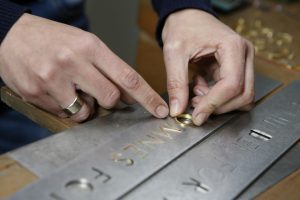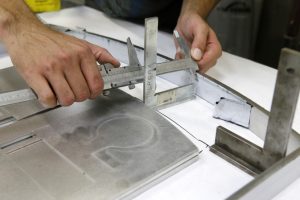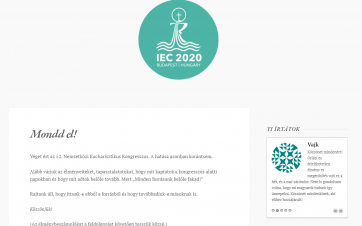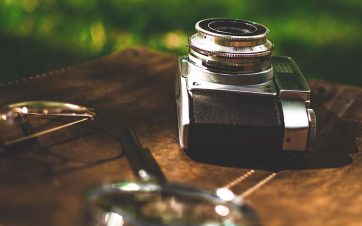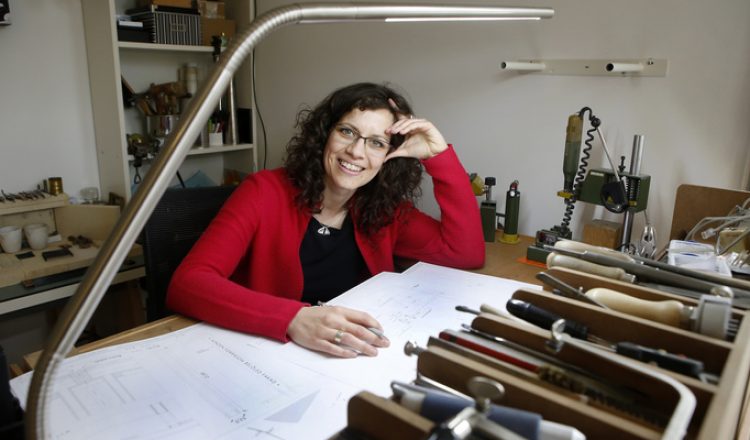
The monstrance through the eyes of the artist

An interview with Kata Lenzsér-Mezei, the artist who created the representative monstrance for the Budapest International Eucharistic Congress
The Secretariat General of the IEC has organised a competition for the design and the production of the representative monstrance of the Eucharistic Congress. With the unanimous decision of the jury the winner of the competition was the design of Kata Lenzsér-Mezei, architect and goldsmith. The monstrance was introduced to the public on the 2019 “Forráspont-day”, a Eucharistic youth event. Our colleague Luca Dorottya Kaszab interviewed Kata Mezei-Lenzsér.
- You studied architecture at the university and turned your attention to metalwork after graduation. Was that an old dream or a sudden call or feeling that you could be good at this?
- It was not a sudden call. I found architecture too, because I was someone with wide interests. In my senior high school year I was unable to express what I wanted precisely, but architecture was open enough to have the possibility of diversification. During my university studies I won a one-semester scholarship in Florence where I started to develop the idea that I wanted to do some handcraft besides architecture. After I had graduated I started to work and attended drawing and painting courses where I asked my mentors for guidance to find my way as an artist. Finally, I found metalwork. I started to learn and graduated as a goldsmith in Hungary, but meanwhile I completed jewellery design training in a fashion designer school in Milan, too.
- For an outsider your profession seems to be art, mathematics and architecture at the same time.
-This is a good point.
- Do you share this view? Design is a must but it is definitely art?
- Absolutely, but I think these go together. A design process comes before the creation of a piece of art, and design also requires some research. One cannot plunge into the middle of it and draw it, but first seeks for some inspiration, geometry, shape, colour... Our brain is continuously filtering and taking notes of the information during our activities and stores it in the unconscious parts of our mind. When I sit down at my drawing board, this whole bunch of information and experience is in my hands, and helps me to form and express my thoughts and feelings.
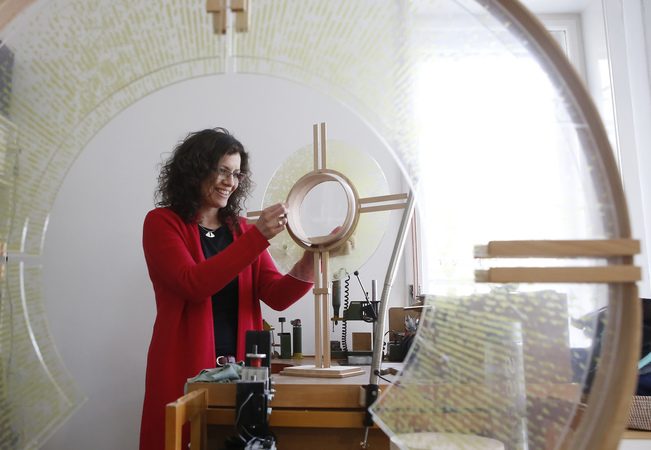
- You made the reliquary of St. Thomas Beckett and the representative monstrance for the International Eucharistic Congress, so you are involved in the Church. Has Christianity been the part of your life since your childhood, is it connected to somebody in your life or you got close to it while working?
- I was brought up in a Christian family. I was taken to church first by my grandparents and later the whole family joined after the change of the political regime. I was quite familiar with liturgical issues when I started work.
- Both of your above mentioned works were made as a result of a design competition. When you have a principal, the specified issues seem to be bans or frames? Do you focus on your own thoughts first or the order?
- The way is certainly defined by the principal as his dreams have to be taken into consideration, but it is good if they fit the personality of the artist and do not alter the creativity of her. Of course, composition cannot be selfish in applied art. All in all, it is more a frame than a ban.

- Your work will be displayed to a lot of people from the whole world who are going to attend the Congress. Were you thinking about how the monstrance could be a first meeting with the Eucharist for some people and how to pass its message on at first sight when you worked on it?
- The variation of Christian symbols and motifs is enormous. Besides this, the message of the cross was very important: the connection between the Creator (God) and the people, and the relation of people among each other. It was of utmost importance to me that the monstrance shall convey the pure love of God and the connection between each other.
- Did you realize that the monstrance will be shown to thousands of people and that it would work as an agent to get the message across?
- The idea that the monstrance would work as an agent was very important for me. I was aware of the fact that it is a very significant object, but I did not want to set in my mind on how many people would see it, because it would put too much responsibility on me. It was quite enough to realise that it was important and that it would work as an agent. I left the decision to the jury whether my design would be the one to be shown to the public.
- Did you realise that you had succeeded; the message would be put across, after it was introduced on Forráspont youth Eucharistic day?
- Yes, I did see then that it worked; the monstrance had its place. Let me tell you that it definitely gave me a good feeling.
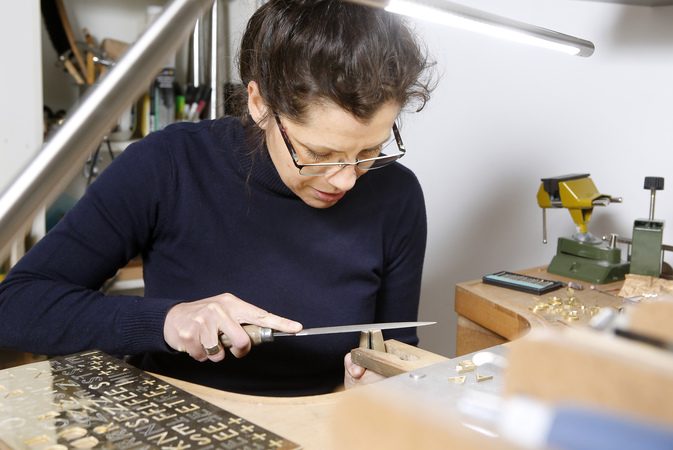
- In case of a composer or a painter laymen know much more about the workflow as it is usually presented by an end product. Metalwork seems to be a bit more mysterious for the public. As I look at the photos taken of the workflow of the monstrance I think it must have been very exciting.
- Small objects and jewellery can be made in a single workroom. I have made most of my works here and alone. The making of the monstrance was on a different scale; I had to involve a number of workshops so it was more complicated and new for me. In architecture we cooperate with several workshops and engineers and now this kind of cooperation was needed in metalwork, too. Firstly, I needed a locksmith for such a big stainless steel object as the external supporting structure of the monstrance. This is the biggest part of it so I started with this piece. It is important to move from the large parts to the smaller ones in order to provide preciseness. There is a steel inlay in the inner part of the silver monstrance to keep its balance, which had to be prepared by locksmiths again. When it was done I brought it to my workshop and started to create the silver monstrance. It was partially made in my Budapest workshop and in the workshop of a fellow silversmith in Zalacsány. For that reason I had to shuttle between Budapest and Zalacsány for a couple of months. I also had to cooperate with several other workshops; galvanizers, engravers and glass makers in Budapest. The glass glory and other glass work were made by my design, but in glass maker workshops because glass making is a distinct profession which I am not familiar with. To enable the glassmakers to grind the glass pieces to their right places we had to finish metalwork and silverwork first. Then we had to return to the locksmith’s to finalise and fix the mounting profiles for the glass pieces. It was an extremely intensive six-month period.
- Allow me to ask a last question: does the monstrance have any part that is really a piece of you, which you would not modify even if you were asked to do so?
- The essence of the work is the concept for me. It was important for me to create a separate entity. This goal was enhanced by the application of motifs, the design, the geometry of the monstrance and its source. It develops upwards from the pedestal to the sacrament; it guides the sight in this way but it opens at the tabernacle and embraces it. I insisted on keeping this and it was retained. I did not have to argue for it because it was understood.
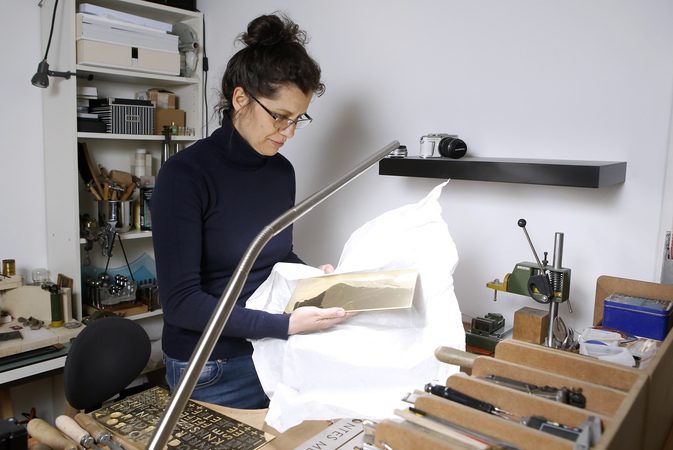
Here I stopped the sound recorder but not the dialogue. I looked around in the workshop and Kata continued to talk with enthusiasm and professionalism. You can see our photo gallery by clicking here:
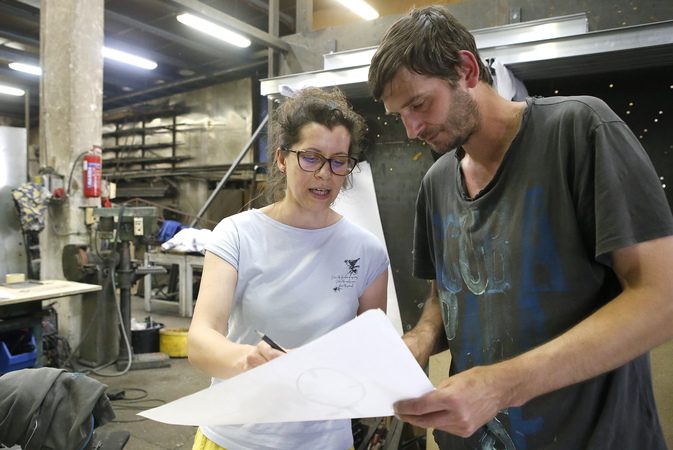
Photo: Marcsi Ambrus
Luca Dorottya Kaszab / IEC Secretariat
